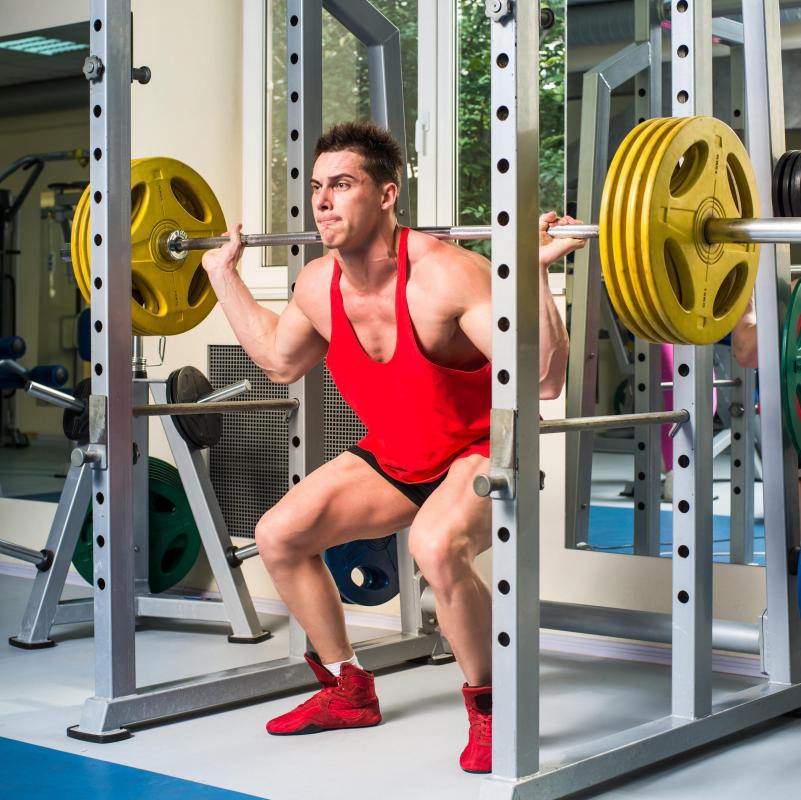At TheHealthBoard, we're committed to delivering accurate, trustworthy information. Our expert-authored content is rigorously fact-checked and sourced from credible authorities. Discover how we uphold the highest standards in providing you with reliable knowledge.
What Are the Benefits of Biomechanics for Exercise?
The study of biomechanics for exercise is the analysis of the forces of physical exertion on the structures of the body. Studying the effects of these forces has two main benefits. First, it enables the exerciser to improve technique and avoid injury. It also helps to improve performance and make greater fitness gains in strength, cardiovascular fitness, and flexibility. Utilizing biomechanics for exercise enables an individual to intelligently engineer exercise sessions to make maximum gains in the shortest time and in the safest way.
During exercise, the body endures physical stress in order to get stronger in some way, either by building muscle size and strength or by increasing effectiveness of the cardiovascular system. This stress is created by lifting heavy weights or moving the body in ways that increase heart rate and respiration rates. Correctly done, the movements create force on the bones and muscles in a way that causes microscopic damage to muscle fibers and stresses bone and tissue. Although this sounds undesirable, it is necessary to make muscles and body tissues stronger. Once these tiny injuries heal over the course of a few days, the body is stronger than it was before exercising.

Studying biomechanics for exercise allows the exerciser to understand the way the body responds to different types of exercise intensities, angles, and positions. For example, there are many ways to strengthen the quadriceps, the main muscle running along the front of the thigh. Yet some methods engage different surrounding muscles to differing degrees, while other methods bypass these auxiliary muscles and isolate the quadriceps. Squatting exercises engage not only the quadriceps, but also the hamstrings, gluteus maximus, and dozens of other muscles in the body to varying degrees.

Taking this example further, the quadriceps muscle can also be strengthened through use of a leg extension machine, which involves sitting with a weighted bar at the ankle. Straightening the leg while using this machine causes the quadriceps to work with much less help from the muscles that might normally help during the movement. This has several effects.

First, the quadriceps muscle is worked more directly and may build concentrated strength. Yet this movement also increases forces upon the knee that can cause damage over time, especially in an athlete who has had a knee injury in the past. Studying biomechanics for exercise will make this effect clearer so the exerciser can choose appropriate exercises.
Avoidance of injury is another reason for studying biomechanics for exercise. In the previous example, the exerciser performed a squatting exercise to strengthen the legs, specifically the quadriceps. Performing the exercise correctly will have many beneficial effects on strength and muscle size. If the exerciser has poor form and technique, biomechanical analysis can reveal the fact and help determine the type of forces poor technique will exert on surrounding joints and tissues.
Through sports and exercises biomechanical software, movements can be analyzed and corrected to make the exercise safer. If the movement feels right to the exerciser, it can be difficult to understand how to correct it. Through biomechanical observation and recording of the movement, the exerciser can see his movement as if he were an outside observer and correct it, preventing injury.
AS FEATURED ON:
AS FEATURED ON:













Discussion Comments
I read somewhere that a lot of people don't actually get much benefit from standard sit-ups because of poor biomechanics. They don't engage their abdominal muscles as much as their lower back muscles, and those muscles aren't designed to take all that strain. I know when I used to do certain exercises in gym class, like sit-ups or pull-ups, I'd end up feeling sore for a week.
My football coach finally showed me what I was doing wrong biomechanically, and I got much better results with a lot less pain after that. It was all about bending the joints, not bending my spine.
Back when I was at the gym three or four days a week, my trainer would always make a point of checking the settings on my exercise machines. He said he studied biomechanics in college and knew that most gym users didn't get the maximum benefit from things like stationary bikes and treadmills. They either didn't adjust them for their personal measurements or they didn't engage the right muscles while using them.
One time he told me to raise the seat on a stationary bike two inches and it made all the difference during my workout. I had to extend my leg more and I couldn't rely on momentum alone.
Post your comments